Queen’s Wharf & Riverside Studios
Reviving Riverside Studios in the setting of Hammersmith Bridge
Overview
Queen’s Wharf has united two disparate riverside sites – a derelict office building and the world-famous Riverside Studios – to create a cohesive and vibrant mixed-use development in the setting of the Grade II listed Hammersmith Bridge.
The intelligent design follows the Surrey Bend of the River Thames – a place made famous by its defining role in the Oxford vs Cambridge Boat Race – and wraps 165 new homes around and over the redeveloped Riverside Studios.
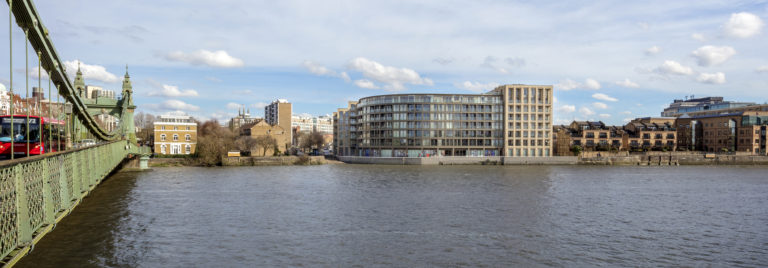
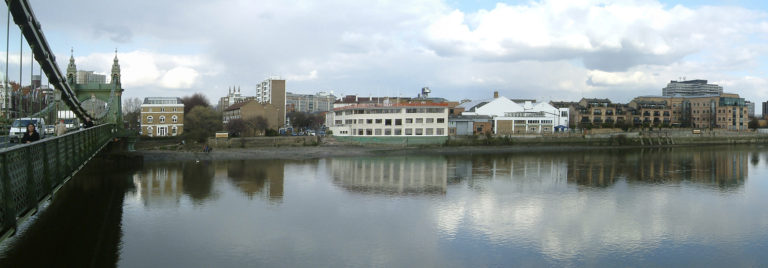
Riverside Studios
The revived Riverside Studios provides three double-height TV studios, a media centre, theatre, 200-seat cinema enhanced public entertainment facility, bar and permanent exhibition of Riverside Studios’ heritage in the foyer. ‘Box-in-box’ construction acoustically separates the conflicting uses to allow the Studios to contain in excess of 100dB – equivalent to a jet take-off – without any noise or vibration impacting residents.
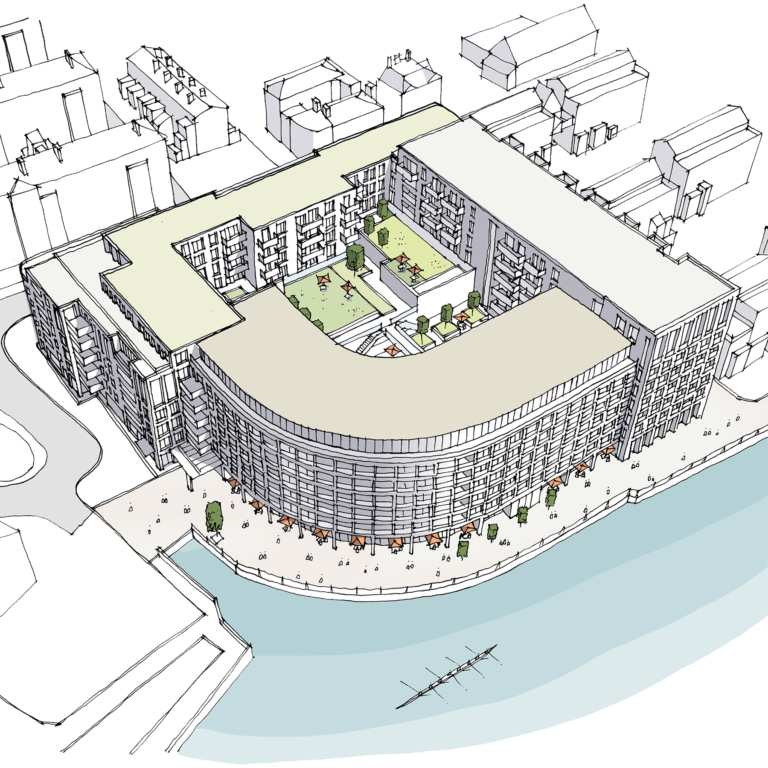
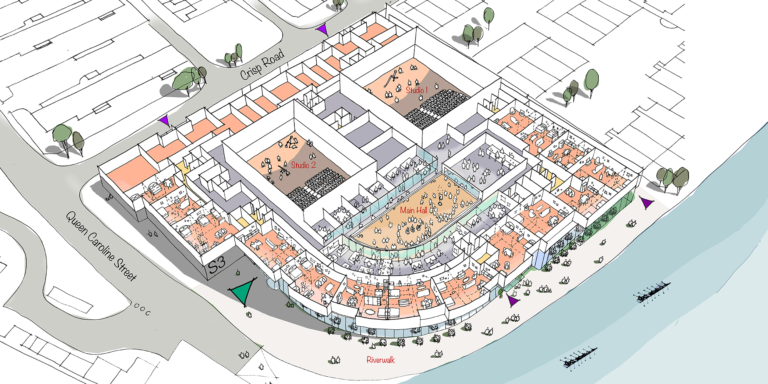
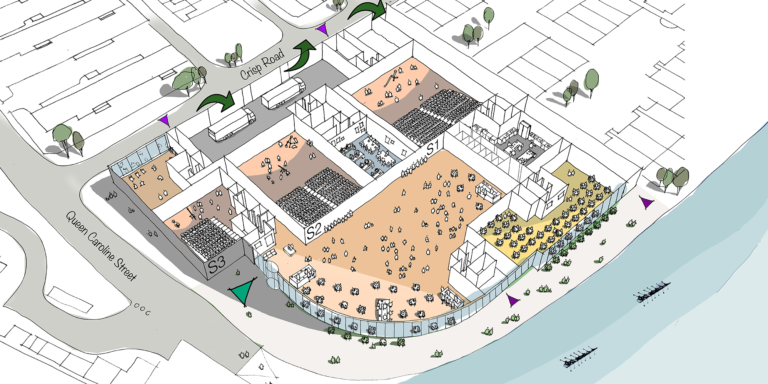
Riverside living
Addressing the site’s context and orientation, nearly every home is unique in spatial configuration. Dual-aspect apartment layouts and a rooftop yoga terrace maximise views of the river, whilst a central multi-levelled garden, formed by the curve of the building and varying height of the recording studios below, provides sheltered, intimate spaces for residents.
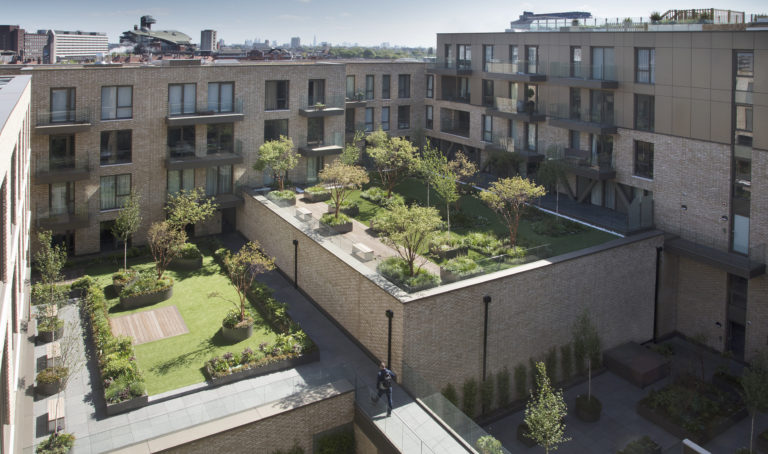
Architecture
The architecture has been inspired by the vernacular of its locality and its riverside setting along the Surrey Bend. The four façades share a common architectural language yet individually respond to their specific context and constraints.
At the riverside, the eight-storey glass-fronted building is characterised by its curved exterior, which draws attention to Hammersmith Bridge. The building is set back from the river’s edge at ground level to increase the public realm and provide natural shading and outdoor terraced space for the restaurant and café. Here, the main residents’ entrance is purposefully positioned for residents to benefit from river views as they enter and leave their home.
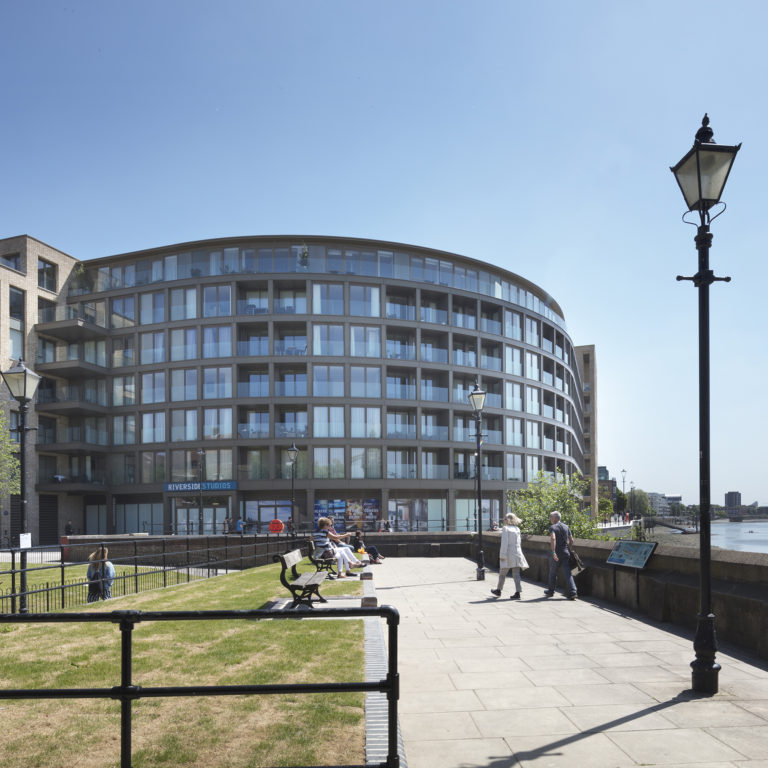
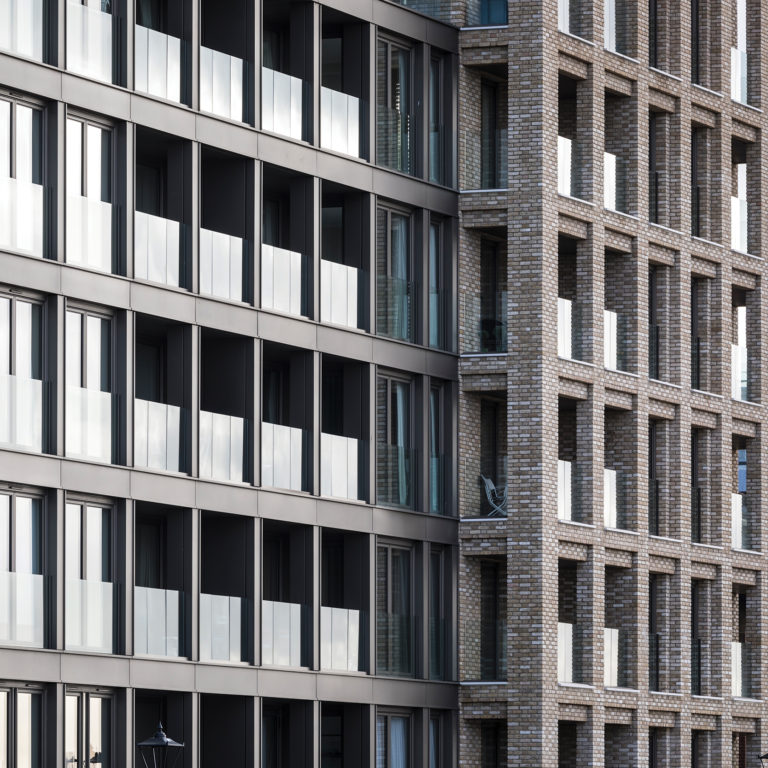
The glazing terminates at a six-storey brick element with protruding bays, brick lintels, inset terraces and balconies, and deep window reveals to respond to the post-war Queen Caroline Estate opposite and provide a tactile and elegantly proportioned façade.
At the end of Queen Caroline Street, Crisp Road’s five storey façade mirrors the existing terraced houses, with upper floors set back to reduce scale and to form balconies. The residential use sits above the service area of the Studios, the ticket office, and access to the residential car park.
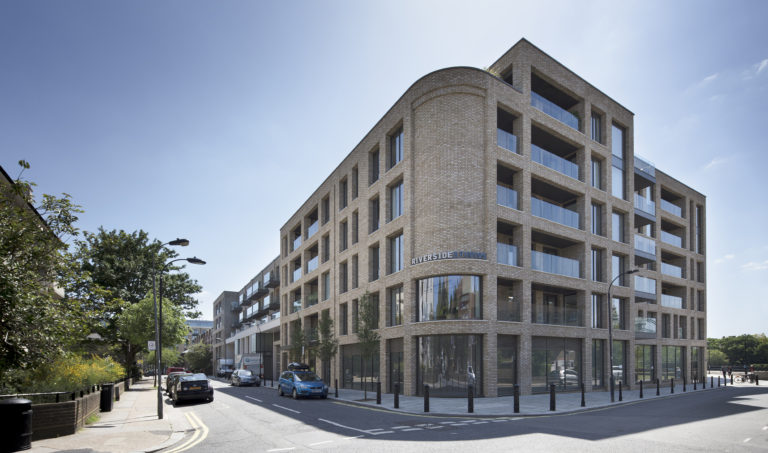
Along Chancellors Wharf, the height increases back towards the River, creating a pathway and procession towards the extended Thames Path where a seven-storey ‘bookend’, inspired by the brick warehouses historically found along the Thames, links to the riverside glazing.
Tumbled London brick in traditional Flemish-style bond and recessed mortar has ensured a positive design legacy.
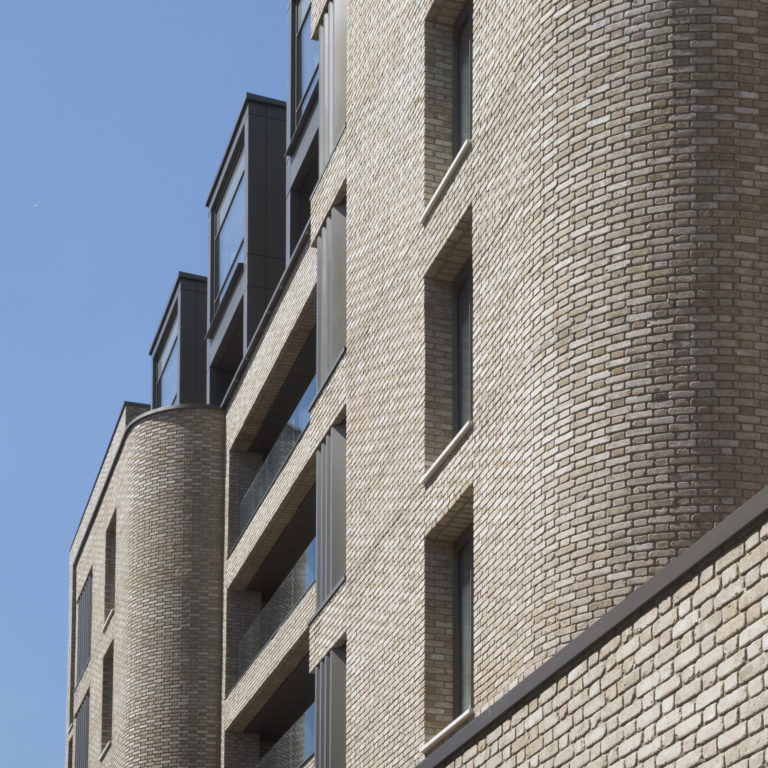
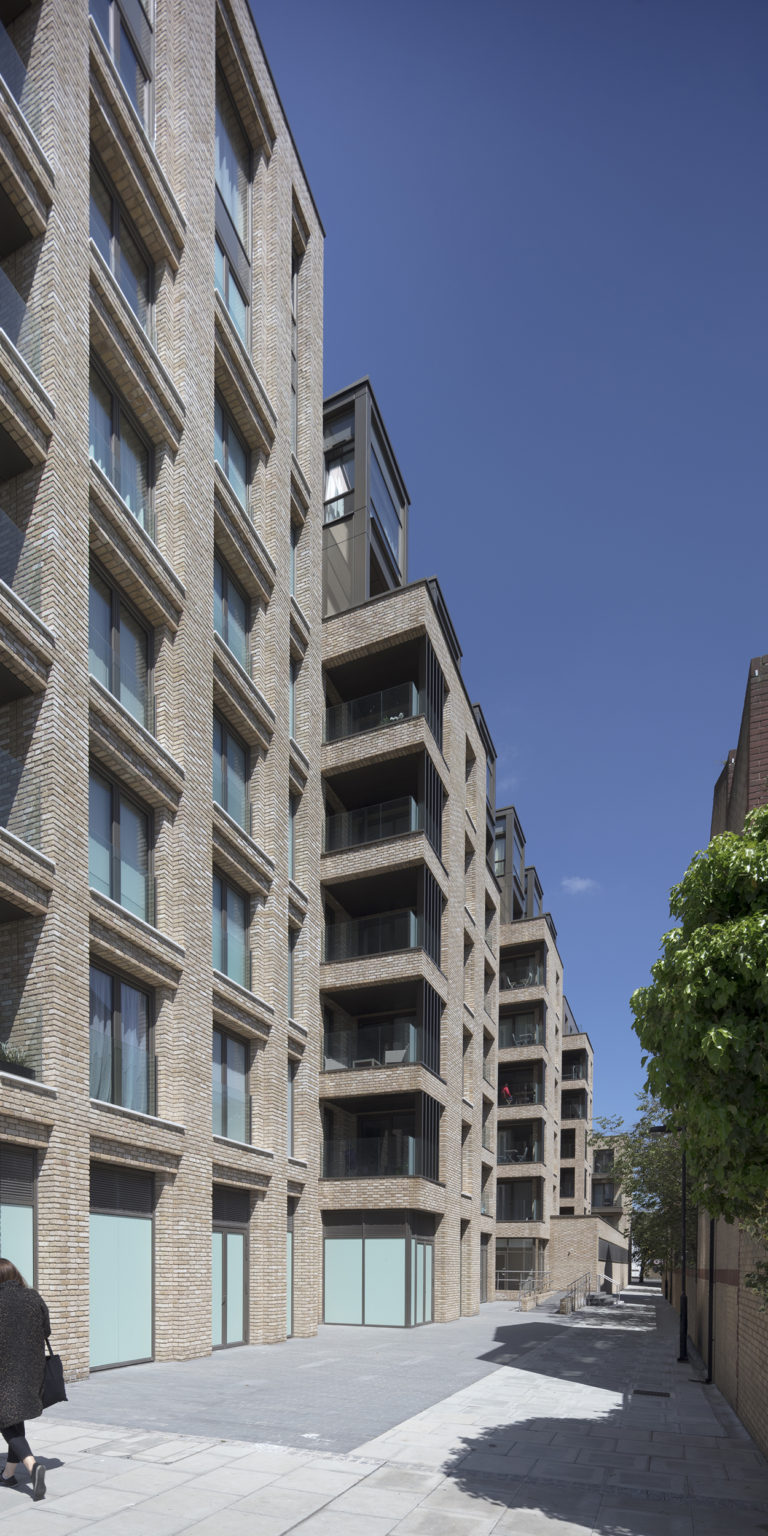
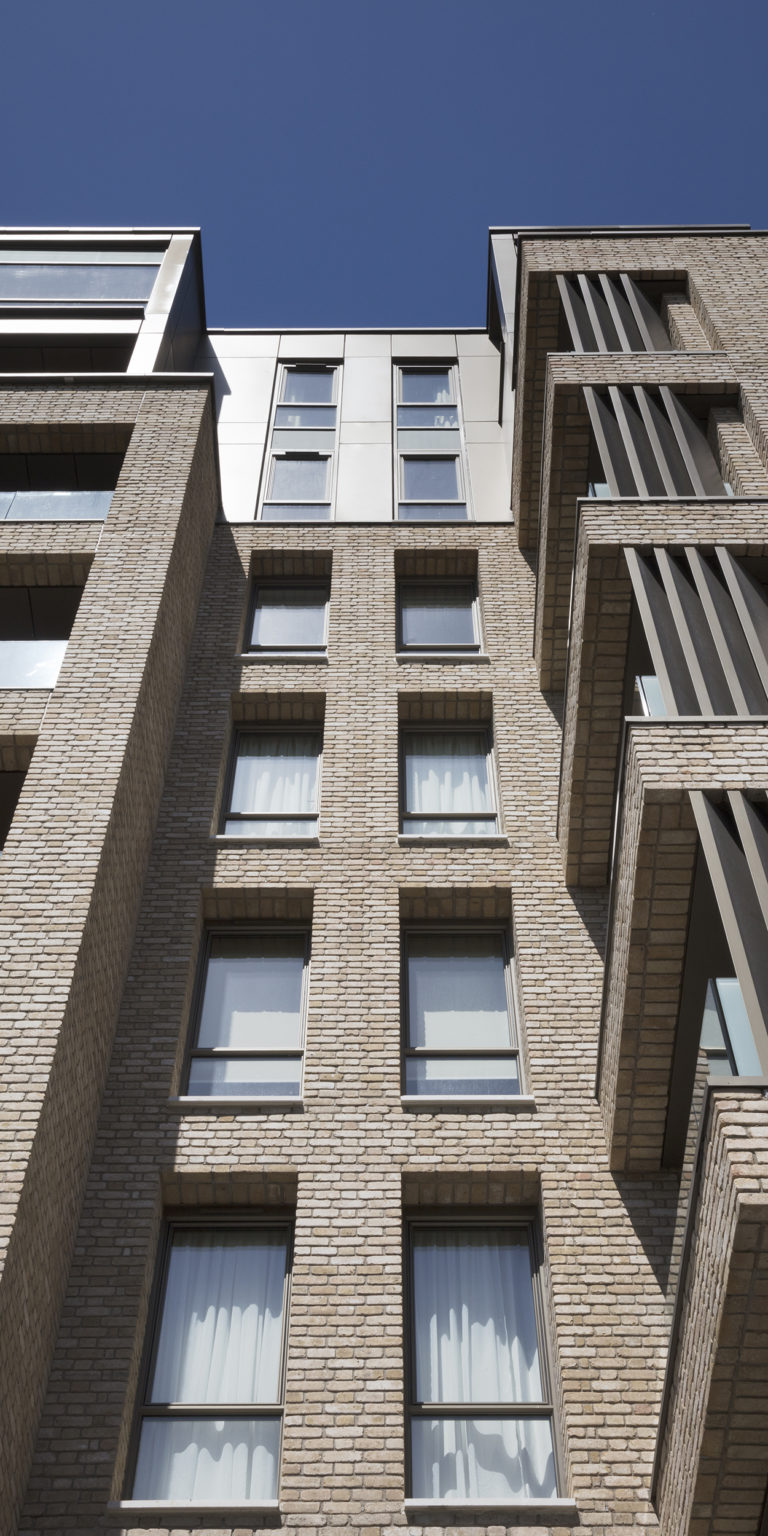
Opening up the river
The Thames Path was previously broken at Queen’s Wharf, and pedestrians were required to follow a convoluted route down the back streets away from the river. The development’s new riverside walkway has connected Hammersmith Bridge with the Thames Path for the first time, activated by a ground floor café and restaurant to complete this dynamic development.
"Mount Anvil, A2Dominion and Assael have brought this iconic London site back to life, protecting the future of Riverside Studios and creating a new world-class destination." Andrew Reid / Design & Planning Director, Mount Anvil